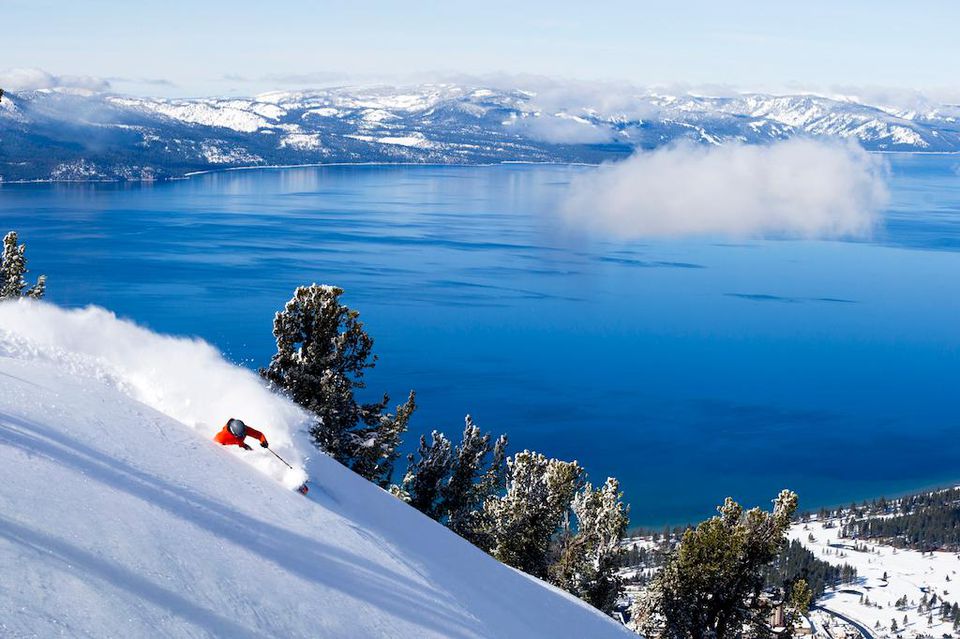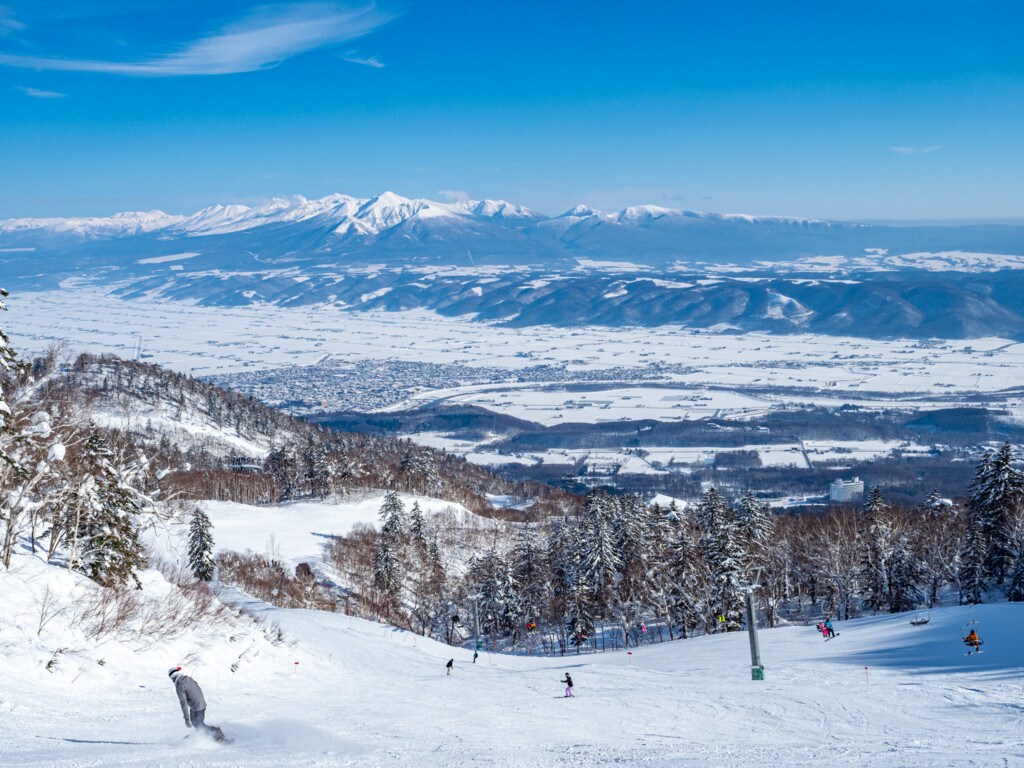
Japan. Its snow is so legendary that it has coined its own term: ‘JaPow.’ It has become a part of every skier’s and snowboarder’s lexicon. Ranking up there with Steamboat’s “Champagne Powder” and Bozeman’s “Cold Smoke.” We understand if you want to experience where this term originated at Niseko’s ski resorts. But if you’re like us and want to go where no one else is going, we’ve learned that it might be time to go skiing in Hokkaido and experience its ‘Bonchi.’
Table of Contents
Hokkaido is Bigger Than You Think
A map of Japan might make you think that the northern island of Hokkaido is small compared to the rest of Japan, but you’d be surprised to find out it’s nearly one-quarter of the country’s landmass (~22% to be exact) and roughly the size of the state of New York! And there’s more to skiing in Hokkaido than the well-known resorts of Niseko or Rusutsu. There are over 100 resorts to explore in the Hokkaido region alone! On our trip this winter, we learned about a magical place called the “Hokkaido Powder Belt.”
Hokkaido Powder Belt
On Hokkaido, most of the resorts that people visit are on the western side, surrounding the city of Niseko. The Hokkaido Powder Belt, however, is in the center of Japan’s northern island. Using Asahikawa or Furano as base camps, you can access a variety of different-sized ski areas, each offering something unique.
Bonchi – Another Kind of JaPow
As we mentioned in “10 Things I Wish I Knew Ahead of Skiing in Japan,” the sea effect is what makes Japan’s snow so consistently great. While Niseko, being closer to the ocean, benefits from this effect and stays warmer, Hokkaido’s Powder Belt lies further inland. This means it receives slightly less snowfall than Niseko, but the quality of the snow more than makes up for it.
To set it apart from the rest of “JaPow,” central Hokkaido is now calling its snow “Bonchi Snow.” “Bonchi” means “bowl” in Japanese, referring to Furano’s basin-like topography. It also plays on the word “bon,” which means “good” in French, giving it a playful twist—suggesting that this is the land of the best snow, the kind of powder you crave.
Authentic Japan in Hokkaido
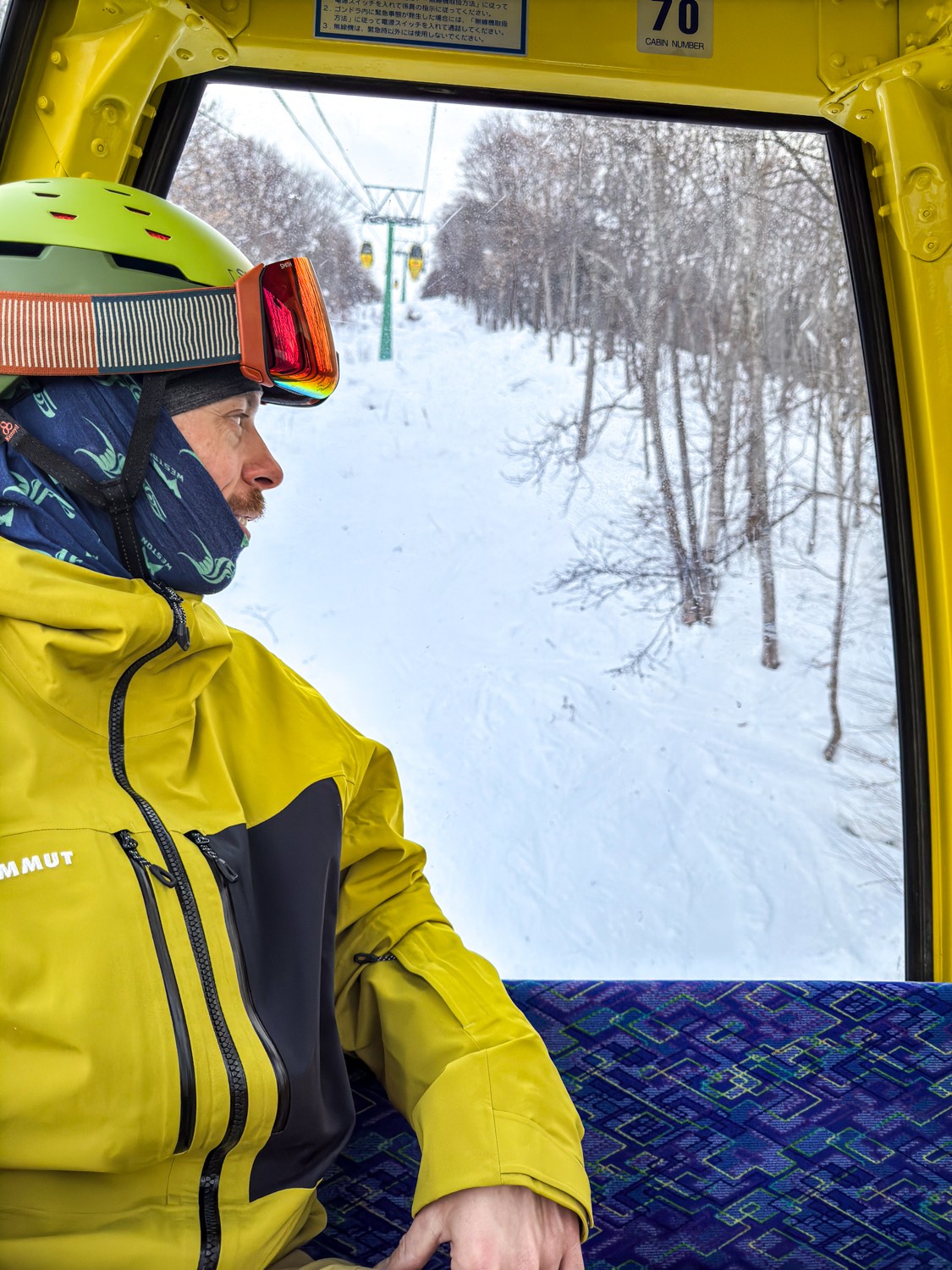
From every person I’ve spoken to, the Niseko ski resorts feel as if you could be at a Colorado resort just as much as you’re in Japan. On the other side of the spectrum, you have the Tohoku ski areas, which are located in the northern part of the main island. There’s a high likelihood you’ll be the ONLY Westerner at these resorts, and without someone who speaks Japanese, it can be difficult to get around. The Hokkaido Powder Belt is the perfect medium between the two. It still feels authentically Japanese, yet you’ll probably run into people who speak English, especially at resorts, hotels, and restaurants.
Experience Over Pow
On our trip this winter, what started as one of the coldest and snowiest seasons in Japan turned into something unexpected. When we arrived in Hokkaido, a high-pressure system sat over almost the entire country, providing sunny, warm-ish (still below freezing) conditions for skiing throughout our entire trip. The locals told us that a week without snow is unheard of. Even without fresh snowfall, the rich Japanese culture we experienced and the stunning scenery made the trip worth it.
Tomamu
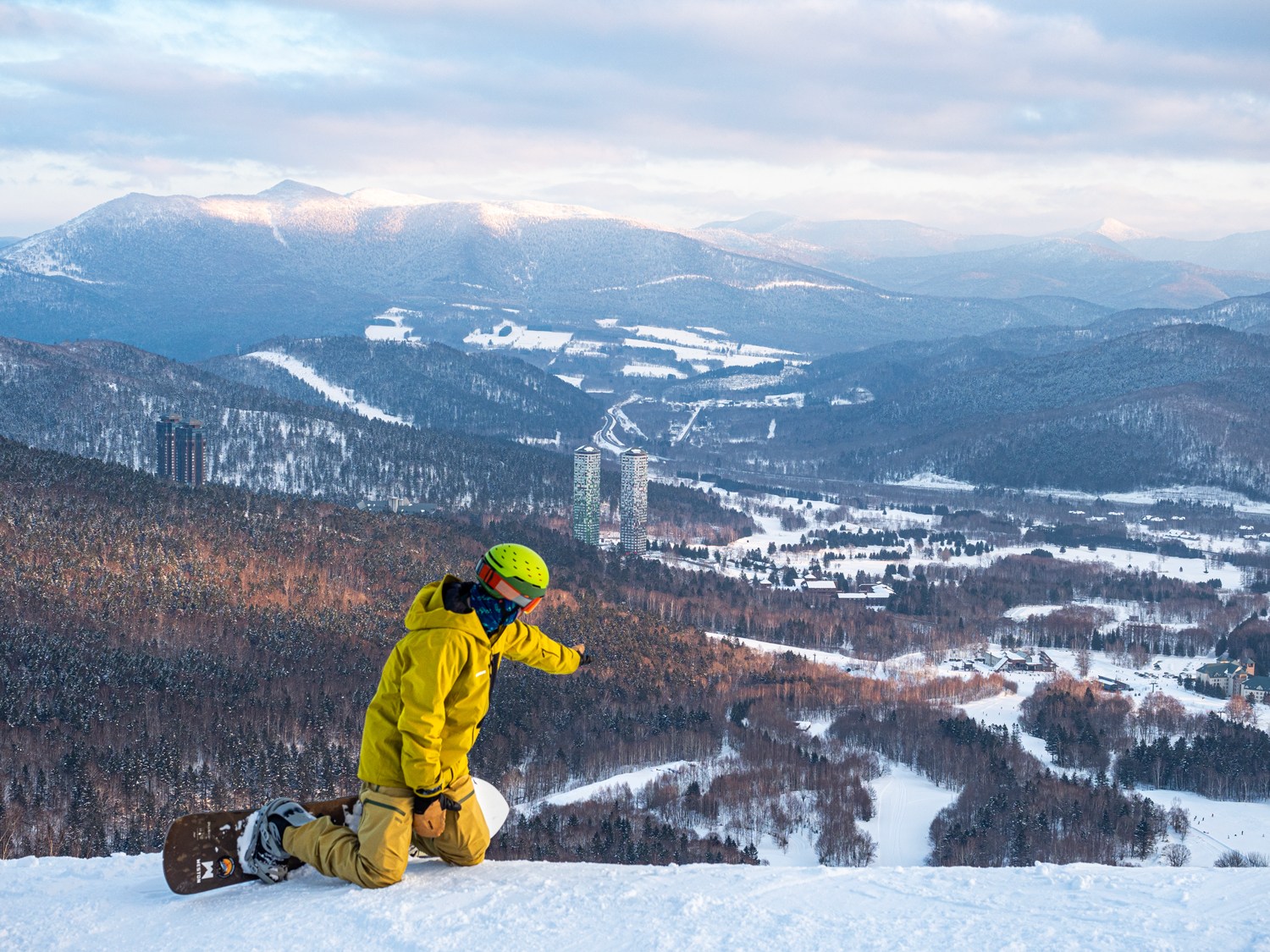
Photos and videos can leave quite an impression before you even set foot on the slopes. But I’ll admit, the pictures of those two massive towers surrounded by nature felt so foreign to me. I imagined that with two giant skyscrapers, there’d be a sprawling village beneath them just as big. Turns out, I couldn’t have been more wrong. Rather than creating a massive village that stretched across the entire valley, the resort chose to build up, preserving as much of the natural surroundings as possible.
The Skiing
Like many Japanese ski areas, this mountain spans two peaks. From the base, it looks like you’d need to shuttle between them, but in reality, the trails connect the two effortlessly. Tower Mountain, located next to the Towers, is the more mellow of the two. It’s home to night skiing on certain days and “Hotalu Street.” But no matter what the snow’s like, you’ve got to make sure you at least bomb down “Hotalu Street” once. The snow-covered avenue feels like you’re in the video game Skate or Die, weaving through a charming Japanese village.
But the real skiing is on Tomamu Mountain. Right off the Unkai Gondola, head skier’s left, and you’ll find wide-spaced birch trees on a steep pitch just begging to be shredded.
The Ice Village
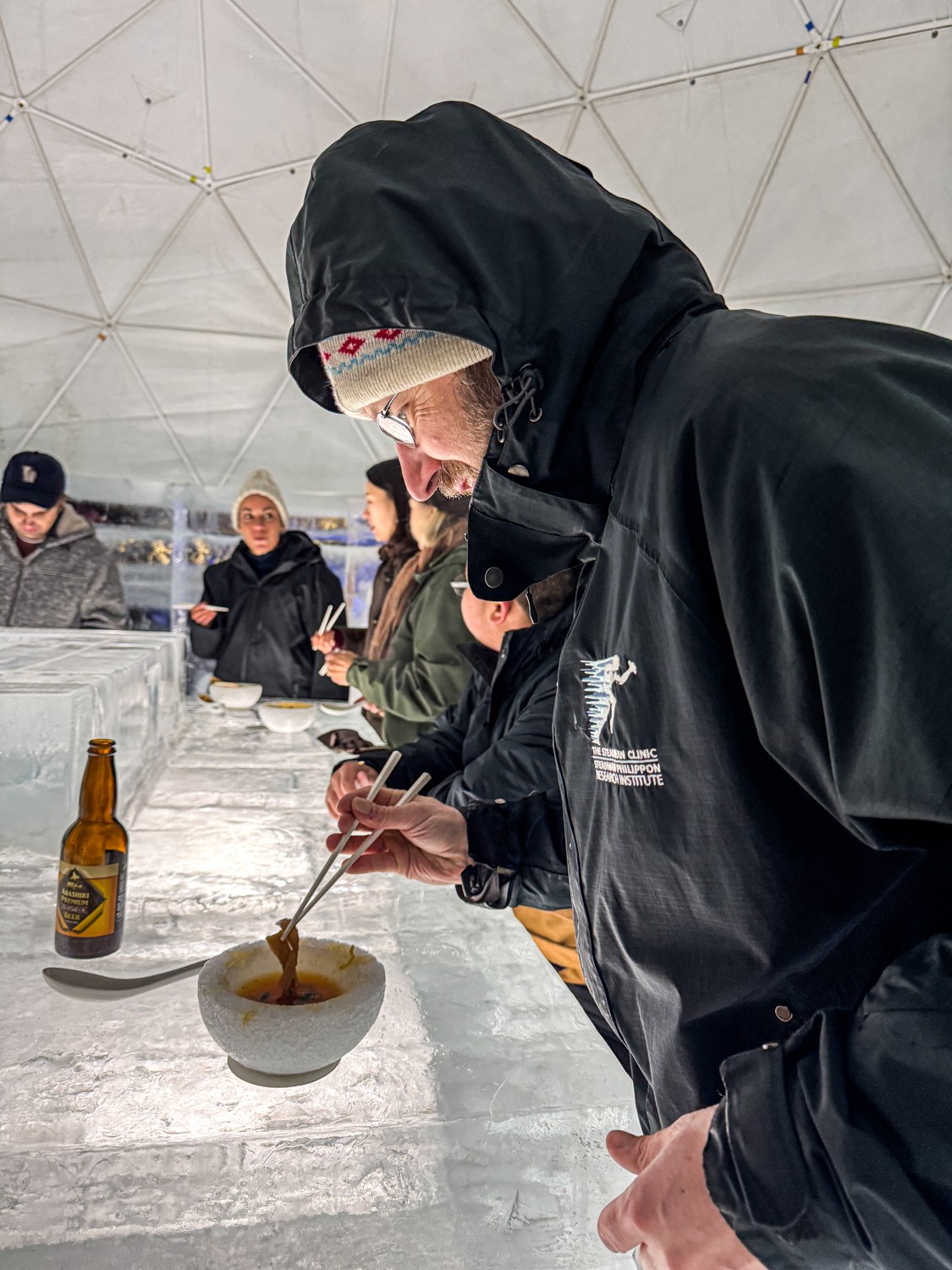
I’ve seen countless photos of ice villages in places like Iceland and Norway, but I never had the chance to experience one in person—until Tomamu. It was truly magical and something you need to take in if you visit here. Inside, you’ll find an Ice Post Office where you can send a postcard. An Ice Bar serving Japanese whiskey cocktails in glasses made of ice. And if that’s not enough, there’s even an Ice Chapel where, according to the resort staff, there’s at least one wedding everyday throughout the season!
Oh, and there’s an Ice Ramen Restaurant… and let me tell you, that was an experience. The frozen egg in the ramen was like a ramen-flavored gobstopper—definitely something you’ve got to bite into to understand.
Local Freshies® tip: I can tell you right now, whatever you wear normally snowboarding or skiing, be sure to add a layer if you visit the ice village. After a day of skiing, the ice from the village felt as if cold was emanating from the structures.
Furano
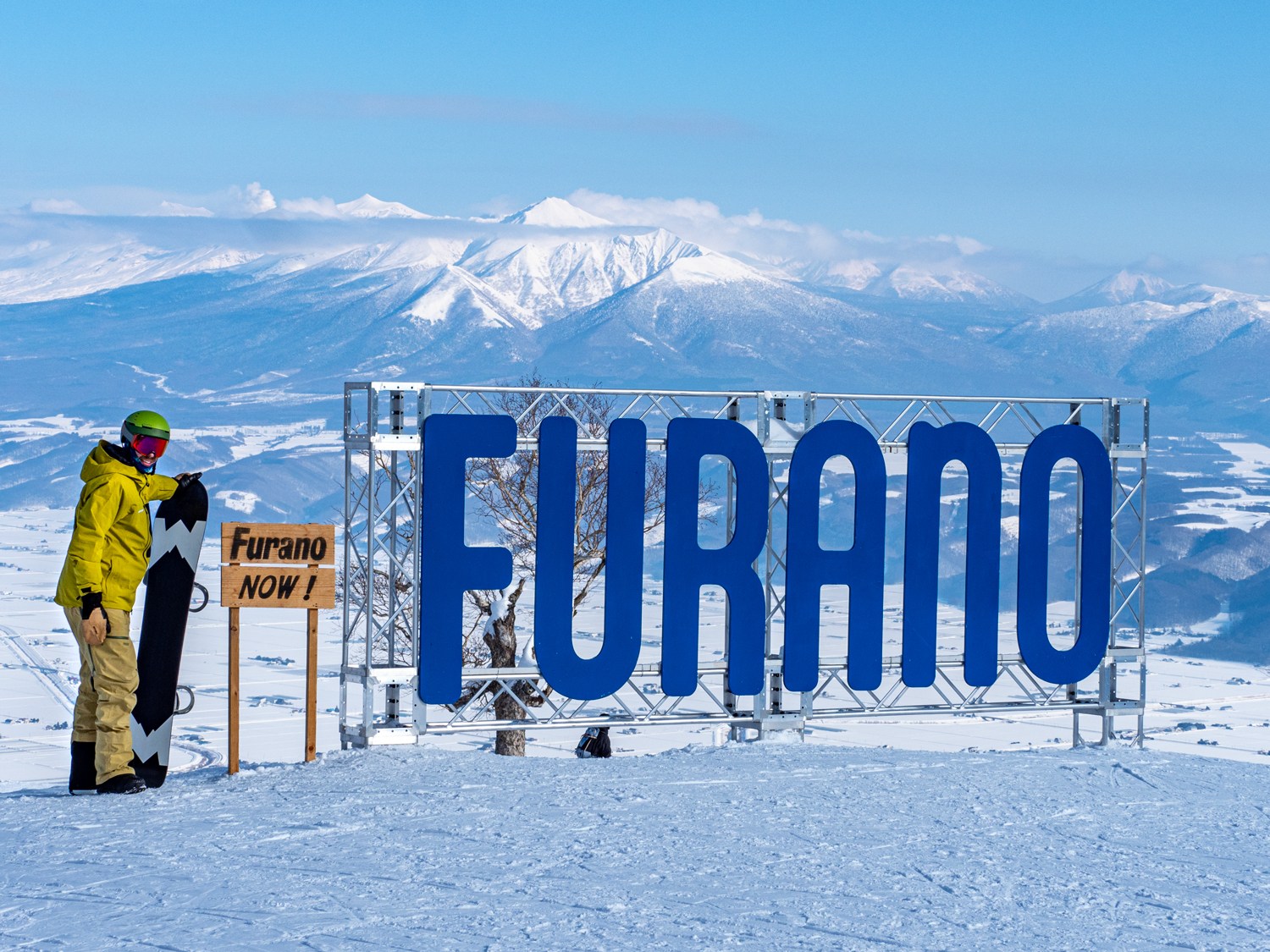
Even from a distance, its hulking face is impressive. Out of all the dozen or so ski areas we visited in Japan, Furano stands out with the rowdiest terrain—probably why it’s the most popular in the region. The steep slopes are made for expert shredders. The resort itself feels like a mix of different resorts rolled into one. The Ropeway’s cable car reminded me of Jackson Hole’s tram, while the fall-line skiing following the mountain’s natural topography brought to mind Taos’ classic trail system. A shining example of this is the A-3 trail: a fun, steep, twisty, tight run that bounces down the fall line as if it were trying to reenact how a waterfall would flow if it were made of snow.
Through it all, Furano still maintains its authentic Japanese vibe.
On sunny days, the views are stunning. Across the long valley, you can see the massive, treeless peaks looming over the snow-covered farmland below.
Danger Lurks
With each new angle, the mountain reveals more big lines you didn’t catch from the last perspective—and, at the same time, more danger. From the top of Kitanomine, looking toward the backside of the Furano zone, we saw huge fractures that looked like glide avalanches just outside the resort’s boundaries.
Kamui Ski Links
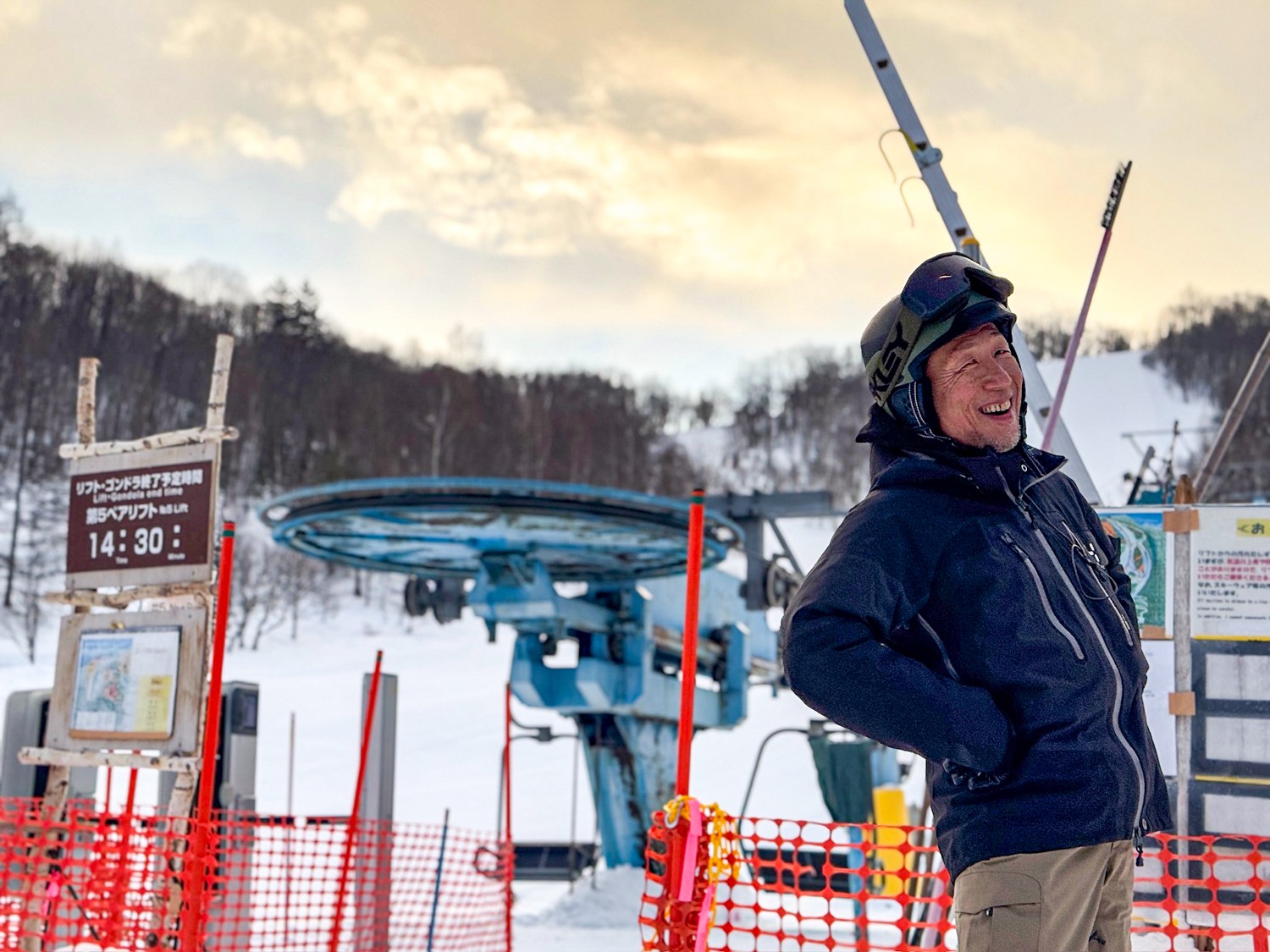
Some mountains stand tall, practically yelling at you, “You got what it takes?” while others are more comfortable in their own skin. Kamui Ski Links is definitely one of the latter. It wasn’t the first impression that blew me away—it was what we discovered once we got to know the place.
Mom & Pop Feel
Out of all the mountains we visited, Kamui Ski Links was our favorite. Why? It has that “Mom & Pop” ski area vibe we all crave. There are almost no “Gaijin” around, just a true community spirit, with race clinics on the mountain and locals enjoying cheap meals of soba and chicken curry with rice in the lodge.
And then there’s the terrain. From the base, it looks like the slopes are short, but that’s not the case. Turns out, their gondola accesses nearly 2,000 vertical feet of skiing. While the terrain might not be as steep as Tomamu or Furano, what it lacks in steep shots, it more than makes up for with a laid-back vibe (aka fewer crowds), accessible glade skiing, and a relaxed boundary policy.
Other Ski Areas
While we didn’t get to explore every ski area, the region is packed with some seriously unique spots. Asahidake is a one-hit gondola that opens up access to Mt. Asahidake’s epic backcountry terrain. Then there’s Kurodake, another one-lift wonder, featuring cliff bands to huck off, chutes to tackle, and steep fall-line skiing that’ll make experts feel right at home. And let’s not forget about Sahoro, which offers an all-inclusive resort experience along with its tree-lined slopes—perfect for some solid tree skiing. Then there’s Pipu, Canmore (not the Canadian one), and Santa Present Park to round out the list.
Where to Stay
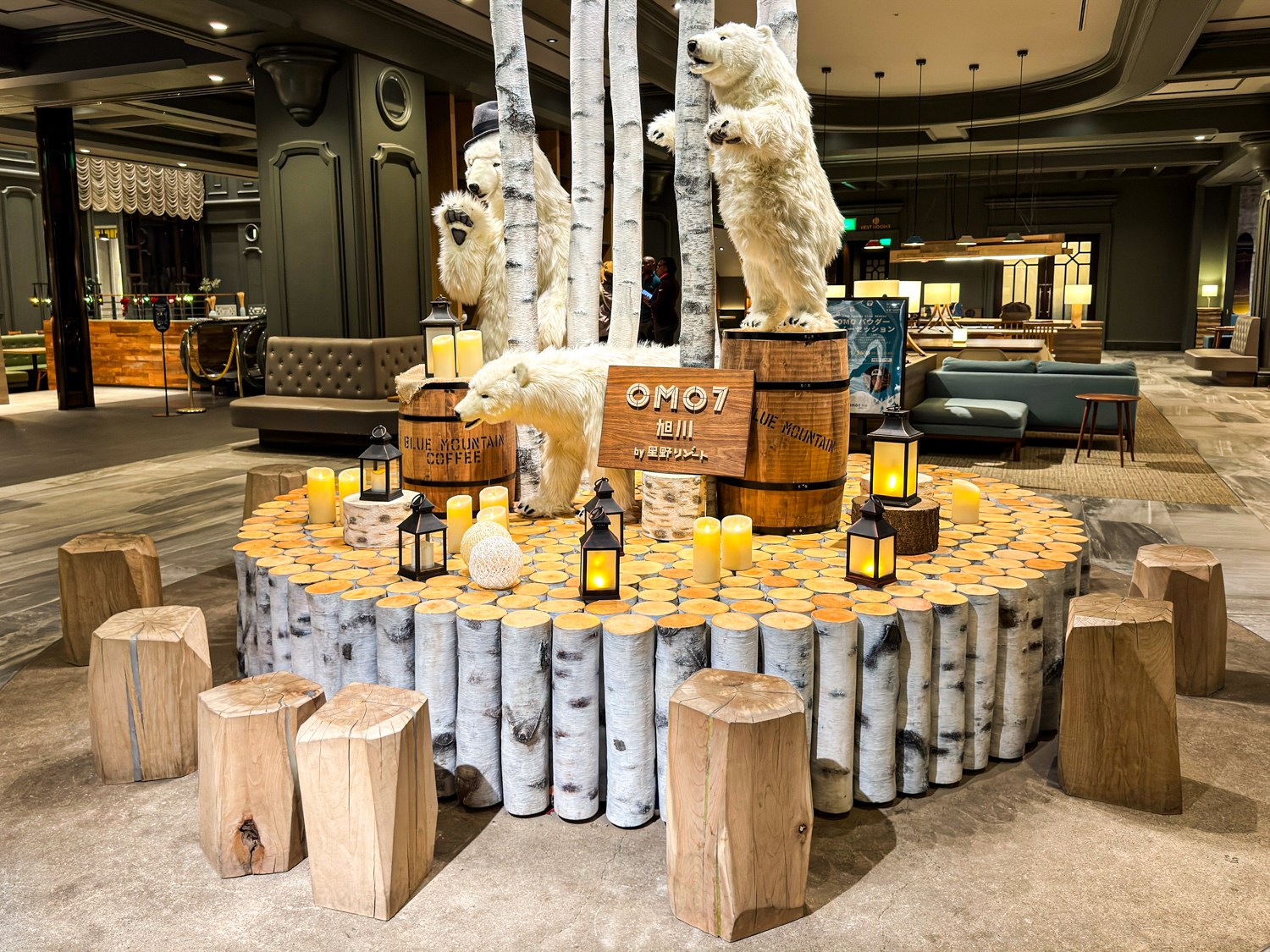
Resort Living or City Experiences
Depending on the kind of experience you’re after, that will dictate where to stay. If you’re looking for the all-inclusive resort vibe, you’ve got that option. Staying close to the slopes means you’ll be spending most of your time at the hotel, where nightlife is pretty much nonexistent. But if you’re the type who wants to expand your horizons, staying in one of the nearby cities is a great choice. It’ll give you the chance to sample local cuisine, check out shops, and soak in the local scene. In that case, staying in a city might be more your style.
Asahikawa – City Experiences
The town’s architecture feels like if Milwaukee went full-on Japanese and then got dropped next to a bunch of massive mountains. Staying in a real city means you’re in for an authentic experience—straight-up local vibes. For a general rundown of things to try and do along with some tips, check out our Japan Guide. For Asahikawa, here’s what to expect:
Local Cuisine
The city’s known for its ramen, and you’ll find spots serving it all over. But if you want to do a side-by-side ramen showdown, check out the Asahikawa Ramen Village, where eight of the city’s most famous ramen joints are all in one place. Another regional delicacy? Soba noodles. Made from buckwheat, Hokkaido produces nearly 40% of Japan’s supply. These brownish noodles are a staple in Japanese meals, with a nutty flavor and chewy texture. You’ll find them served both hot and cold—perfect for whatever vibe you’re feeling.
Sanroku gai – Nightlife
The Japanese live that New York lifestyle—work hard, play hard, and trust us, they work HARD. As the sun sets, Asahikawa’s entertainment district, Sanroku Gai, really comes to life. This area is packed with over 1,000 restaurants lining the tiny winding walkways, serving up fresh seafood caught right off the local waters. Plus, you’ll find plenty of drinking spots to keep the vibe rolling into the night.
OMO7 Hoshino Resort
For part of our trip, we stayed at the OMO7 Hoshino Resort in Asahikawa. As the name suggests, it’s a resort right in the heart of the city. The lobby features a “wax bar” stocked with high-end waxes and tools, so you can tune up your skis on the spot. Downstairs, there’s a beautiful onsen with soaking tubs, a cold plunge, sauna, and a giant whirlpool—perfect for easing those post-ski aches and pains. We didn’t get a chance to try breakfast, but friends who’ve stayed rave about it. The iconic dish? Waffles topped with salmon. It might sound odd, but apparently, it totally works.
The resort’s central location made it the perfect spot to dive into the local culture after a day on the slopes. Plus, it’s a great basecamp with Kamui Ski Links, Asahidake, and Kurodake all under 90 minutes by car, and even Tomamu just over two hours away.
Tomamu Hoshino Resort- Resort Living
As part of our trip to hit up Tomamu, we stayed at the towers. If you’re coming with a family and don’t feel like resort hopping, Tomamu Hoshino Resort would be the ideal basecamp. Besides the incredible skiing, the resort offers an insane amount of other activities, such as horseback riding in the snow (Jaime sooo wanted to experience this), snowmobile tours, ice fishing, and even curling, to name a few. Inside the towers, you’ll find rooms that are absolutely massive—even by American standards, let alone Japanese. A standard room includes a separate family area alongside a huge bedroom.
Join Local Freshies® in January 2026!
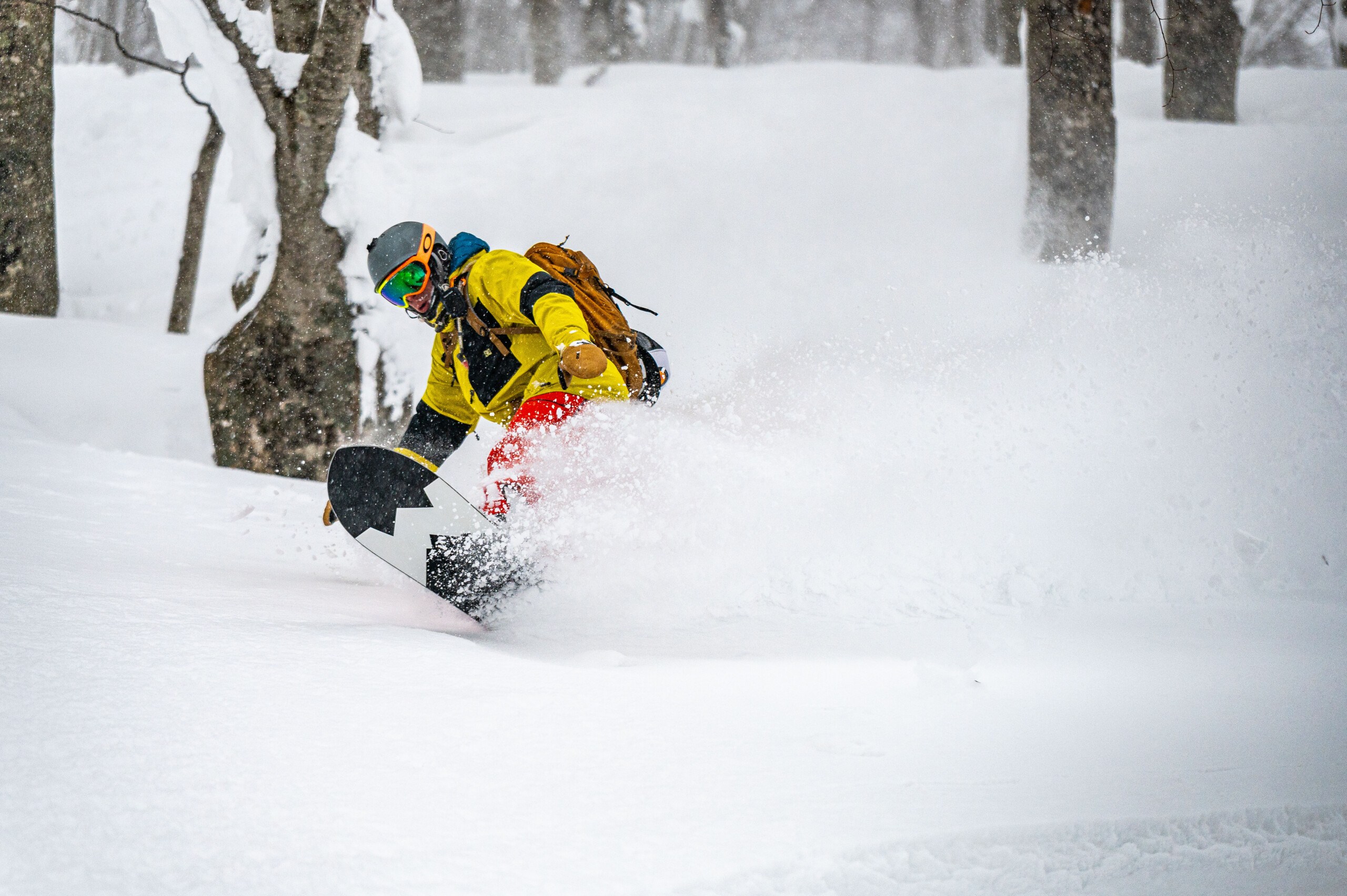
This trip definitely sparked the itch for some more JaPow, especially after seeing what these mountains have to offer. After our last visit in 2023, where we got to experience Japan’s legendary snow (and got totally skunked on our Hokkaido visit), we’re ready to go back to Hokkaido for round two!
If you’ve ever wanted to experience Japan, come join us for the 10-day Hokkaido Indy Trip. More details will be dropping in April 2025.
The post The Next Hotbed of Skiing in Hokkaido & It’s Bonchi appeared first on Local Freshies.

